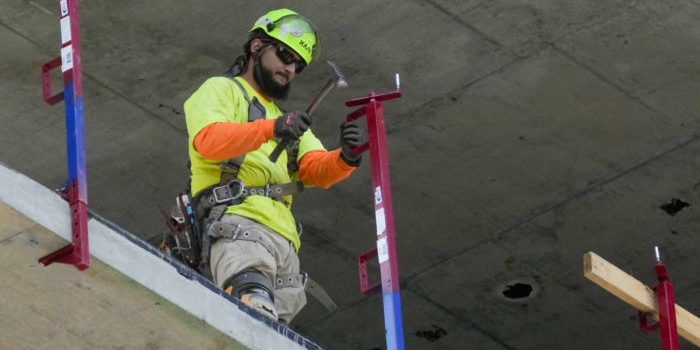(Headline USA) Two days after the federal holiday celebrating the American worker, the Biden–Harris Labor Department sheepishly acknowledged that there were about 200,000 fewer of them than at the start of the summer.
The Labor Department reported Wednesday that there were 7.7 million open jobs in July, down from 7.9 million in June and the fewest since January 2021. Openings have fallen steadily this year, from nearly 8.8 million in January.
On the heels of the department’s staggering announcement last month that it had vastly overestimated the employment figures for the preceding year, sparking recessionary concerns, the new loss estimates may raise additional anxieties about a hard-landing to the Federal Reserve’s interest-rate hikes being artificially bolstered by additional government spending in a vicious cycle of inflation, taxation and unemployment.
Layoffs in July rose from 1.56 million to 1.76 million, the most since March 2023, though that level of job cuts is roughly consistent with pre-pandemic levels, when the unemployment rate was historically low.
Overall, Wednesday’s report painted a mixed picture of the job market. On the positive side, total hiring rose in July, to 5.5 million, after it had fallen to a four-year low of 5.2 million in June. And the number of people who quit their jobs ticked up slightly, to about 3.3 million. The number of quits is seen as a measure of the job market’s health: Workers typically quit when they already have a new job or when they’re confident they can find one.
The current lower level of quits suggests that wage increases will likely remain modest, which should help further cool inflation.
The number peaked at 4.5 million in 2022, when many workers shifted jobs as the pandemic recovery let many businesses that had shuttered their storefronts or gone remote to reopen.
Many workers, however, opted instead to drop out of the job market and continue receiving government benefits. The spike in quits at that time helped drive up wage gains as companies jacked up pay to try to find or keep employees—which, in turn led the inflation driven by short term supply shortages and energy cost increases to calcify into something more permanent.
Left-wing economists sought to downplay the severity of the current job losses, hoping that they will be just enough to pressure the Fed into lowering its benchmark rates before the November election, but not enough to create a public backlash over the weakened economy.
“Labor demand is still solid, albeit moderating,” claimed Stephen Stanley, an economist at Santander. He noted that July’s job openings were still about 7% above 2019 levels, when hiring was healthy before the pandemic.
In July, job openings fell sharply in health care and state and local government—two of the top areas where the government previously cited grown, and both of which are heavily—if not exclusively—subsidized by U.S. taxpayers.
Job totals also dropped in warehousing and transportation. Openings rose in manufacturing and professional and business services—a category that includes legal services and engineering and accounting.
Even as openings have fallen for the past two years, there are still roughly 1.1 job openings for every unemployed person, Wednesday’s report showed. That reflects the economy’s continuing need for workers and marks a reversal from before the pandemic, when there were always more unemployed people than available jobs.
The July report on job openings was the first of several measures this week of the labor market’s health that the Federal Reserve will be watching closely.
If clear evidence emerges that hiring is faltering, the Fed might decide at its next meeting Sept. 17-18 to start cutting its benchmark interest rate by a relatively aggressive half-percentage point. If hiring remains mostly solid, however, a more typical quarter-point rate cut would be likelier.
On Thursday, the government will report how many laid-off workers sought unemployment benefits last week. So far, most employers are largely holding onto their workers, rather than imposing layoffs, even though they have been slower to add jobs than they were earlier this year.
On Friday, the week’s highest-profile economic report—the monthly jobs data—will be released. The consensus estimate of economists is that employers added 163,000 jobs in August and that the unemployment rate ticked down from 4.3% to 4.2%.
Last month, the government reported that job gains slowed in July to just 114,000—far fewer than expected and that the second-smallest total in 3½ years—and the unemployment rate rose for a fourth straight month.
Those figures sparked fears that the economy was seriously weakening and contributed to a plunge in stock prices. Late last month, Fed Chair Jerome Powell underscored the central bank’s increasing focus on the job market, with inflations steadily fading.
In a speech at an annual economic symposium in Jackson Hole, Wyoming, Powell said that hiring has “cooled considerably” and that the Fed does not “seek or welcome further cooling” in the job market.
Economists saw those comments as evidence that the Fed may accelerate its rate cuts if it decides it is needed to offset a slowdown in hiring.
Adapted from reporting by the Associated Press

